A senior Conservative MP used the Westminster Hall debate on Typhoon sovereign capability to demand clarity on radar upgrades, export prospects and the impact of the Government’s planned F-35 mix.
Mark Francois, MP for Rayleigh and Wickford, told the Minister that the Turkish deal for 20 Typhoons was welcome, but raised several urgent questions about both the industrial and operational future of the aircraft.
He asked the Government to confirm the radar fit for the Turkish tranche 4 jets and whether Meteor would be included in the package, emphasising the implications for BAE Systems, Leonardo and MBDA. He also sought confirmation on reports that Qatar may transfer older Typhoons to Turkey, suggesting this could drive additional UK orders. Francois also pressed for updates on potential further exports, including the long-stalled Saudi requirement and Poland’s interest. He argued that additional sales are essential to sustain work at Warton and Samlesbury.
Much of his intervention focused on capability risk. He noted that the RAF has retired around 30 tranche 1 Typhoons, reducing combat mass. He also asked for confirmation that when the remaining aircraft in the Falklands are withdrawn in 2026 to 27, they will be replaced by tranche 2 or 3 jets to maintain the islands’ air defence.
Francois warned that the aircraft’s future performance depends on programmes that have not yet been contracted. He told MPs that although Radar 2 has been fully developed by Leonardo, “the MOD has still not placed a production order even for an initial batch”. Both tranche 2 and 3 aircraft require the phase 4 enhancement package to exploit Radar 2’s electronic warfare functions, yet, he said, “the MOD has still not placed an order for the final development and installation of P4E”.
The MP also examined the wider combat air mix. He noted the slow build of the Lightning Force and asked Ministers to set out the final number of F-35s to be procured. The planned substitution of 12 F-35Bs with F-35As, intended to support NATO’s nuclear mission, prompted further scrutiny. Francois asked what mix of variants the MOD will ultimately buy and how they will sit alongside Typhoon through the 2030s and 2040s.
Turning to the Global Combat Air Programme, Francois urged the Minister to confirm that Tempest remains on schedule for 2035 in light of industry rumours of delay. He described GCAP as a critical component of future sovereign capability and warned that any slippage would have significant implications for how long Typhoon must remain in frontline service.
Carns responds with assurances on upgrades and long-term planning
Responding for the Government, the Armed Forces Minister Al Carns acknowledged the scale of the issues raised. He said the aircraft has “proven itself to be the UK’s premier multi-role combat aircraft” since 2003 and remains fundamental to air policing at home and across NATO. He highlighted current RAF activity on the eastern flank under Operation Eastern Sentry and recent deployments in Poland, Romania and Estonia.
Carns also spoke on the industrial significance of the programme, noting that 37 percent of each new Typhoon is manufactured in the UK and supports “more than 20,000 jobs across the country”. He said the Turkish order is worth up to £8 billion and supports at least 330 British suppliers, describing it as evidence that the Government’s export approach “is delivering”.
On the upgrade path, Carns stated that Typhoon will “continue to underpin our combat air capability into the 2040s” and that the radar modernisation is backed by £3 billion of investment. He said the new electronically scanned radar is being delivered with Eurofighter partner nations and remains “on track for delivery in the next decade”, sustaining hundreds of skilled posts, particularly at Leonardo in Edinburgh. Although he did not provide dates for production orders or commit to specific P4E milestones, he reiterated that Typhoon is undergoing a “comprehensive set of upgrades to deliver operational advantage”.
Carns confirmed that Typhoon and the F-35 will remain a complementary mix. He did not address the detailed concerns about the F-35A nuclear mission, the future weapons fit, or the timeline for Meteor integration, but repeated that the RAF is accelerating its adoption of new technologies and intends to remain “the leading European air force”.
He also linked the long-term picture to GCAP, saying the project remains central to the UK’s future air combat architecture and that Tempest will form part of a broader shift to new systems and innovation. Carns did not comment on reported schedule pressures.


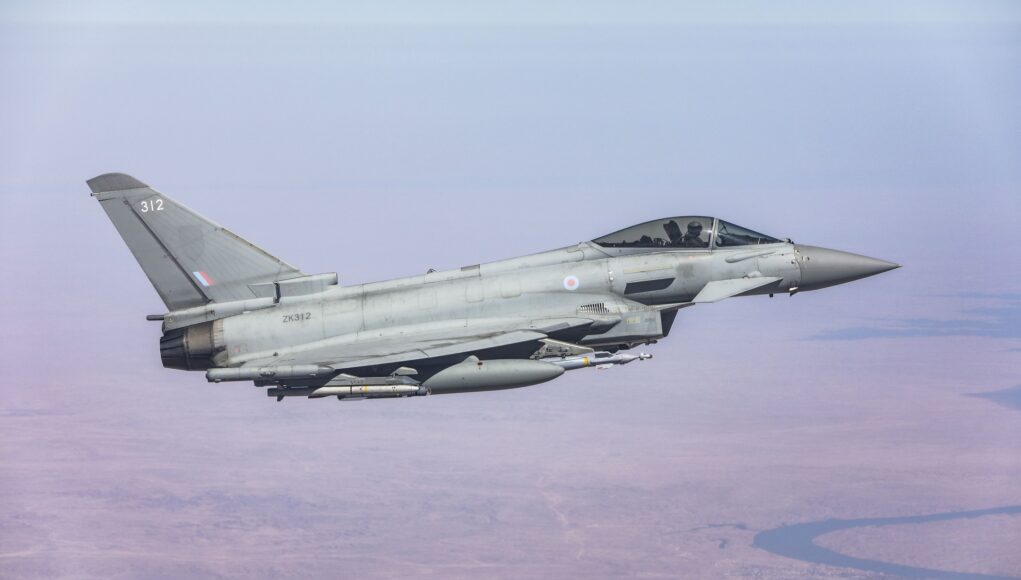
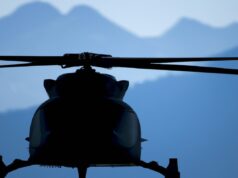

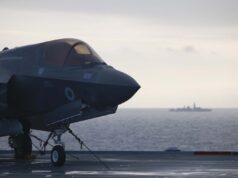
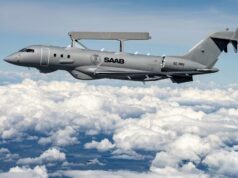
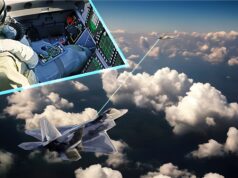
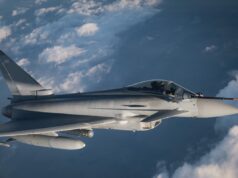
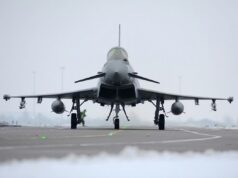
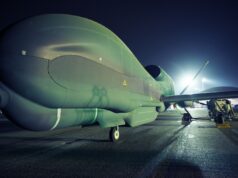

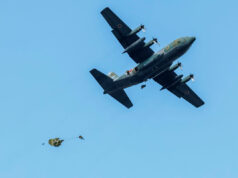

It seems that gap filling and long term investment are clashing for the 2025-2040’s period. Perhaps an early introduction of combat drones could help fill the gap.
There’s too little money chasing too many requirements. Adding in another requirement isn’t going to help. You’d need to cancel out something now to pay for it — government loves taking “brave” decisions like that — only to find delays and cancellations with the replacement.
Then, it would be more Typhoon now I guess?
Isn’t it more the worry over the next 5 years? Do they think there is always the luxury of more time? If there’s not going to sufficient air cover Isn’t there thrn a pressing need for some real GBAD structure for the UK? With the T45 Viper Evolution upgrade happening is the Aster SAMP/T even being considered in a GBAD mix? If the RAF/RN can share F35Bs they can share Aster and CAMM inventory! Is the UK looking at what’s happening in Europe and is it doing anything back home?
No idea why RAF need to be involved in GBAD that should be given to RN as they have the A30 expertise.
In reality it sort of depends on what the GBAD is for..and I suspect this is the big issue
If you look at the U.S. ballistic missile defence a vast array of inter-working systems .. essentially what the Chinese call system warfare ( because they analyse everything).
The U.S. missile defence agency develops the capabilities
The U.S. army has operational management of the ground based systems ( including the GBIs)
The U.S. airforce runs the early warning radar that support the ground based systems kill chain
The U.S. space force provides the launch warnings as well as a number of the space focused early warning radars
The U.S. navy has operational management of the sea based systems and radars.
Effectively it does not matter who does what as long as they do it well as part of a cohesive and integrated system that is harder against attack.
Drop the F35A and develop a suitable warhead for a munition deployable from Typhoon as a sovereign capability would be a better solution than that proposed.
Who are we going to use tactical nukes on, on our own? Argentina? The whole point of this weapon is that it’s NATO. We have a sovereign nuke – at sea. I’m not sure that the F35A is the move – maybe be new Typhoons… but the nuke thing is a NATO thing. We are not going to war with Russia on our own.
Alternatively just buy the French ASMP-A missile and integrate onto Typhoon, whilst buying into its replacement programme – ASN4G.
We don’t have the money to go it alone and develop all our capabilities, so buying off the shelf ultimately saves time and gets you kit. Yes its at a cost in UK workshare/design etc, but occasionally needs must, so just bite the bullet and buy stuff that fits the bill.
I have zero understanding of how the F35A + nuclear improves anything NATO wise. I well understand the philosophy.
We spend our bit on Trident and that is our nuclear umbrella contribution.
F35A just dilutes carrier strike which is so close to being useful.
We want F35A for training and for the RAF to get their foot in the door. The Nuclear is just a side “benefit”
Total waste of resources to split a tiny fleet.
More money on spares and training pipelines for maintainers.
👍👍
The biggest gaps looming with no firm plan to remedy are
1. Combat air, the numbers are just too small and an order of at least 30 new Typhoons would really help.
2. Artillery, with just 14 Archers, MRLS, and light guns, the army couldn’t undertake significant operations.
I fear MRSS and T32, T83 will either be scrapped or not ordered for years.
I understand the logic of acquiring the F35 rather than more Typhoons BUT have we actually ordered any. I know that a “plan” to acquire more was announced but orders? The other problems are very relevant. Spear? How far are we with integration or are we just going to drop bombs ala WW2? Block 4 apparently not going to happen until 2031, five years behind schedule. Could we be any slower?
With Spear 3 delays we likely won’t have anything other than Paveway IV until Block IV in 2031+, there’s just no point pushing it into the Block IV sub-program that should be announced soon. Meteor on the other hand would be a very welcome and timely addition adding some ranged teeth to the F-35 fleet.
Personally I would go all in with F-35 now, extra B models to get carrier strike where it should be, then A models for the RAF, transferring their B’s over to the RN.
The RN cannot take on the B models they severely lack the personnel
In a sensible world the RAF would stagger the transfer as they received A’s (obviously this is much more complicated than it sounds) hopefullly leaving time for the RN to train people up.
What I believe will happen is we will end up with circa 70 F-35’s of mixed A & B variants, also with no extra Typhoon, and the Gov will cross its fingers and toes for Tempest.
The solution is to hire and train personnel. This shouldn’t be a consideration as to how many of what type of planes we buy.
So you want a bunch of planes sitting around doing nothing then because the personnel situation isn’t improving
It takes years from an order to delivery of a plane. I want the personnel to be brought up to speed during those years.
I don’t believe the RN has the budget to operate a fast jet fleet alone.
Which is why the planes are RAF assets, even if the personnel are a mixture of both FAA and RAF.
COs of both front line Sqns are at the moment a RM and a FAA Commander,interestingly.
Couldn’t agree with you more. The R.N. can’t take all the B’s of course but a committment of X number of B’s permananty available to the carriers nakes a lot of sense to me. If we’re going to buy the A version (for whatever use) then let’s have 30 and earmark the B version for carrier operations. I know this is a bit simplistic but it is a starting point.
Situation normal then?
Pretty much!
I read Carns replies and just shook my head, stock answers stating the obvious.
As for François, the Tories haven’t a leg to stand on either when Defence is concerned.
A closed talking shop.
Be fair to François, he was asking dates and fight tonight questions of the Tories too.
Why are we buying As to add another servicing headache, er got rid of phantoms , buccanneers, jaguars and concentrated on phoons and tornado, now phoons and F35b.we need more phoons for mass. RAF Germany had more than the RAF has now. We put enough into the nuclear deterrent with the subs, let others have the As we already give massively to the umberella. Phoons for mass jobs in the U.K. and a proper air deterrent rather than pandering to trump and europe
RAF doesn’t want any more typhoons
It is very very interesting that there is still a vast market for 4.5 generation aircraft and that most nations even those that are buying 5th generation or developing 6 generation aircraft are also still making huge capital investments buying more 4.5 generation aircraft.. infact the RAF is one of the few that seem to turning away from 4.5 generation aircraft procurement..
The U.S. airforce is increasing its buy of F-15EX Eagle II with orders and there is discussion that it may even make a F16 block 80 purchase
The U.S. navy is still taking delivery of new F18s up until 2027
Italy has ordered 24 new typhoons
Germany has ordered 20 new typhoons
Spain has ordered 25 typhoons
It looks like Canada is going to limit its f35 buy to 1 squadron and start building Gripens
France is buying more Rafales ( and has completely ignored the f35)
Infact of the large western airforces it’s only the UK and Japan that have not invested in extra 4.5 generation aircraft. Generally it’s the mid sized and smaller airforces that have been forced to make a one or other choice.
This could be that fact that both the UK and Japan are investing a lot in their 6th generation offer while developing their 5th generation fleets at the same time…. But Italy has managed ?